DIY bird feeder made from scrap materials, using cardboard, flasks, plywood, mesh
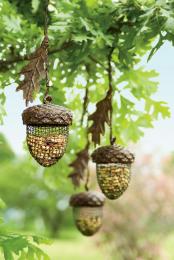
Feeders made and placed outside help birds survive the hungry winter months. The process does not require high skill, and the choice of material has virtually no restrictions. Let's take a closer look at how a bird feeder is made from scrap materials.
Content:
- Bird feeder made from scrap materials
- Bird feeder made from a plastic bottle or canister
- How to make a bird feeder from a shoebox or cookie box
- DIY plywood bird feeder, drawing
- Mesh feeders
- What requirements must a proper bird feeder meet?
- Decorating the product, using it to decorate the site
- What can you feed birds in winter?
Bird feeder made from scrap materials
Without human help, barely 2 out of 10 bird species survive the winter cold. Meanwhile, birds are indispensable helpers for humans in the fight against tree parasites and annoying midges.
Therefore, it is worth supporting your assistants. To do this, you can build a feeder for birds from almost any available materials and hang it on your site or near your house.
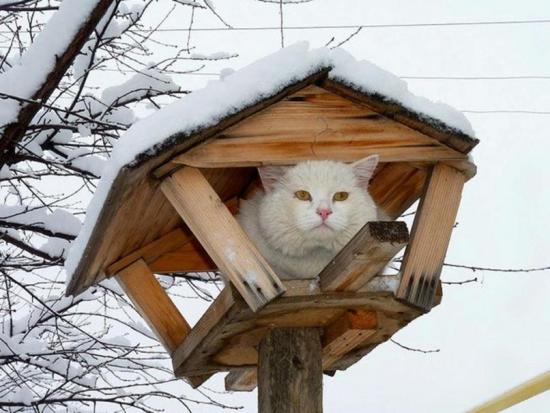
Most often, cardboard boxes, plastic containers, tin cans, unnecessary dishes, boards, plywood, tarpaulin, metal mesh and many others are used for such crafts.
For fasteners I use thread, fishing line, chains, rope, wire. The strength and durability of the structure directly depends on the choice of sources. For example, making a feeder out of cardboard and thread is a task for a primary school student. However, it must be borne in mind that wet weather will lead to unusability of the product in a matter of days.
All homemade bird feeders are divided into 4 groups:
- durable, assembled like birdhouses;
- feeders made of cardboard and paper with a short shelf life;
- products with a long service life, made from more durable raw materials - cans, tin, plastic;
- food suspended directly from threads or wires.
Bird feeder made from a plastic bottle or canister
The easiest way is to make a bird feeder from an unnecessary plastic container. To do this, just cut a rectangular opening in the bottle or canister. Cut plastic with a conveniently heated knife. You don’t have to completely cut out the fragment by bending it upward in the form of a visor.
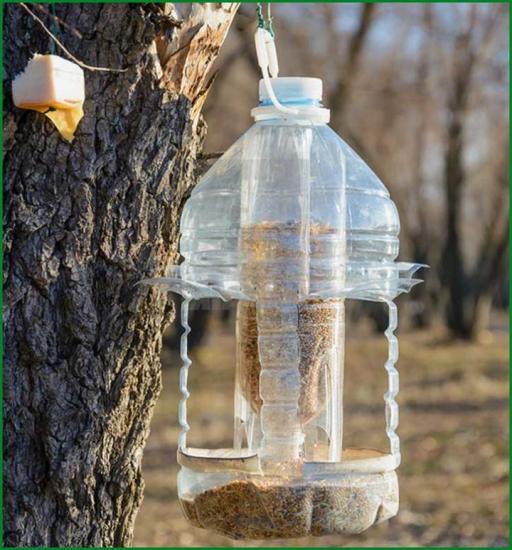
The main task of the manufacturer is to ensure that the cut points are not sharp. If necessary, these areas can be sealed with tape or tape. If you have a soft corrugated tube like a telephone cord at home, you can use this material.
With this manufacturing technology, quite a bit of food can fit into a plastic bottle. There are more practical options when you can fill the entire container with grain. Then several holes are made in the bottle and special trench-like outlets are installed, into which the feed is supplied in doses and continuously.
Large 5-6 liter canisters are good because even fairly large birds can “eat” in them comfortably.To do this, you need to make a fairly large inlet hole. The bottom of such a container allows you to immediately pour a significant amount of feed.
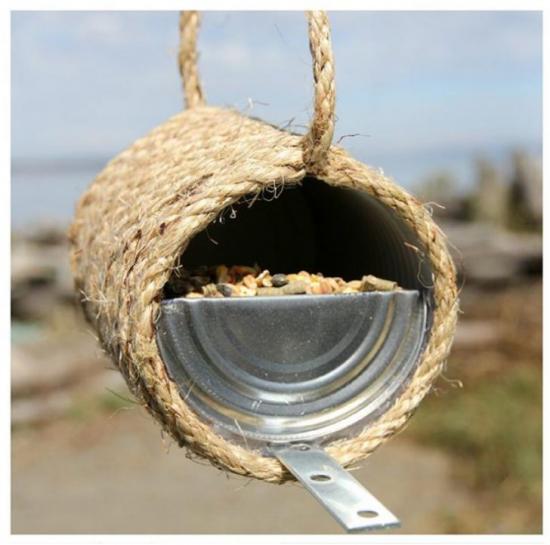
Plastic feeders are usually suspended from a wire. This method of fastening makes the structure more resistant to gusts of wind. It is advisable to weigh down light feeders. To do this, several stones or pieces of brick are placed on the bottom.
If desired, the bottle or eggplant can be placed horizontally. Due to this, it is possible to increase the amount of treats.
How to make a bird feeder from scrap materials, namely from a plastic flask, watch the video:
How to make a bird feeder from a shoebox or cookie box
Cardboard boxes are not the most durable material. Nevertheless, this option is popular due to its accessibility, ease of execution and abundance of execution methods. In addition, if the winter has been dry and frosty, a cardboard feeder has every chance to wait until spring.
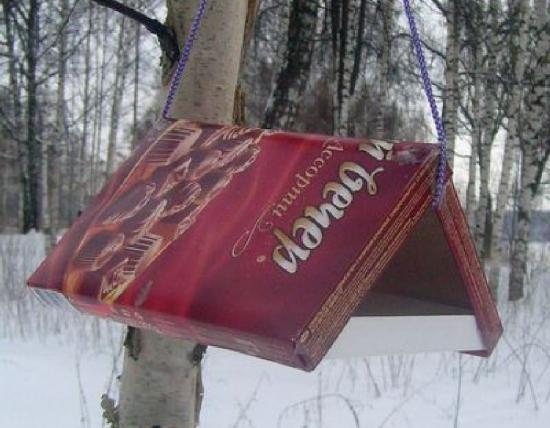
The cardboard shoe box is sealed with electrical tape, and a rectangular or oval hole is made in the lower part of one of the large planes. To extend the service life of this rather primitive design, the cardboard surfaces are wrapped in plastic film and secured with a stapler.
For the safety of “visitors”, the cut points should be taped with tape.
The easiest way to make a cardboard feeder is to nest three unwanted cookie boxes inside each other like a triangle. The joints are glued with tape. Holes are made at the top for the fastening thread. The advantage of this manufacturing option is the presence of ready-made sides that will prevent the feed from spilling out in windy weather.
If the cardboard feeder turns out to be too light, its design should be made heavier. Otherwise, a light breeze will cause the grain prepared for the birds to scatter in all directions. To prevent this from happening, a piece of linoleum or a smooth board is laid around the perimeter of the bottom.
DIY plywood bird feeder, drawing
Making a small house out of plywood is quite simple, especially if you use proven drawings. To work, in addition to the main material, you will need waterproof glue and nails. The working tools you will need are a hammer, a small saw and sandpaper.
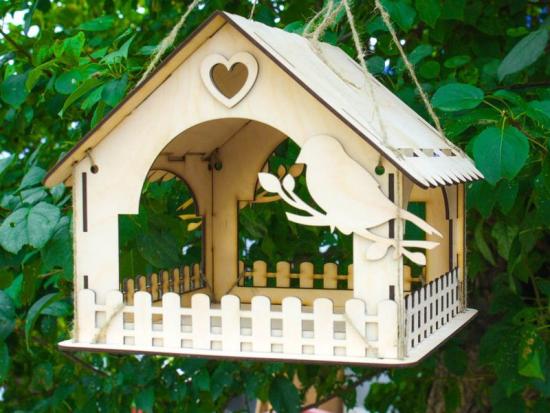
There should be a flat plane at the base of the structure, so it’s worth choosing the most suitable material. It would be nice if this piece of plywood was heavier than the one that would be used to make the walls and roof.
It is desirable, but not necessary, to decorate the top of the product with a house. The gable form is more practical because it does not allow snow and raindrops to linger on the roof. However, quite often there are completely open plywood feeders. Making such crafts requires much less time and effort.
If you do not have a supporting drawing at hand, it is important to consider that the perimeter of the roof of the product must be larger than the perimeter of its base.
The constituent elements must be carefully sanded. If sharp chips remain on the plywood, the birds may be injured. Then, using glue and nails, the walls and base of the product are fastened together. Then they pay attention to strengthening the sides, and lastly, install the roof of the feeder.
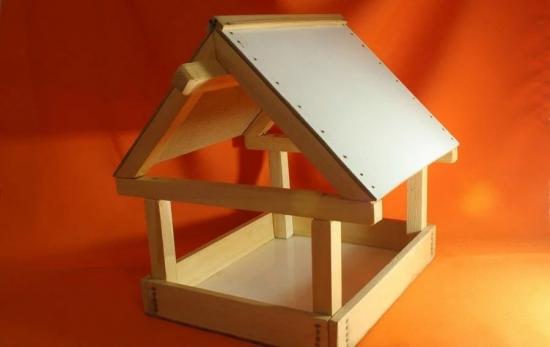
To extend the service life of the plywood structure, its surfaces should be treated with varnish.Thanks to this, the water-repellent properties of the material will be enhanced, and the lightweight plywood structure will decorate the garden plot for many years.
Mesh feeders
Another material for making feeders at home is mesh, which uses both metal and nylon. Mesh feeders look very lively and unusual.
You can purchase a suitable metal net at a garden supply store. The cell size should not exceed 6 mm.
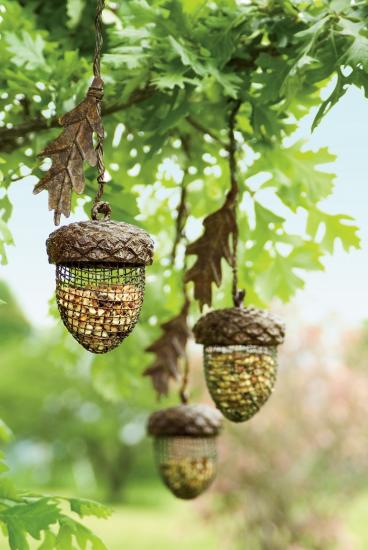
One widely recommended option for mesh feeders is an acorn-style product. To make it, the craftsman will need a wooden top bowl. If desired, you can cut it out yourself from a piece of wood, or you can use old wooden utensils.
The wooden plate will represent the acorn cap. The metal mesh is assembled into a dome-shaped shape and fastened to the cap with nails. The edges of the mesh are connected with soft wire.
The wooden bowl can be replaced with a forged part. This solution is not feasible for everyone, but if such a feeder is additionally decorated with a forged oak leaf, the product can rightfully be considered a work of art.
Such containers should be filled with sufficiently large fractions. Small crumbs will fall out onto the snow, leaving the birds hungry.
What requirements must a proper bird feeder meet?
It is important to remember that it is safe to use a homemade bird feeder. Units, connections and materials are selected in such a way that the feeder does not turn into a trap that threatens the health of the bird. It is unacceptable for the structure to have sharp edges anywhere. This is especially true for the entrance window, through which a bird can get seriously injured.
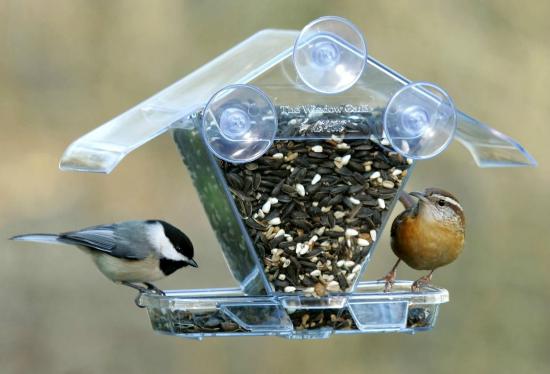
Also, the areas that the feathered guest will hold with his paws while eating should not be sharp. Home craftsmen recommend applying polymer clay or resin to these areas, or gluing them with tape.
A proper feeder should be of good quality and well reinforced, since it will be visited by both small sparrows and fairly large representatives of the species - magpies, crows, pigeons.
If the owners do not initially intend to feed large birds, they should make a structure with a small entrance window. Thus, magpies and crows will not have the slightest chance to eat what was due to tits, bullfinches and sparrows.
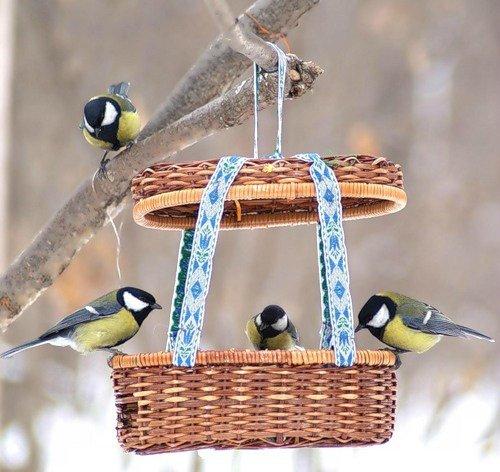
Such preference should not seem unfair. It is initially more difficult for small birds to obtain food during the cold season.
An ideal feeder should have a roof and sides. These elements are needed to protect the feed from getting wet during bad weather. The sides prevent grains from scattering in windy weather. If the feeder does not have a roof, you should periodically check the condition of the remaining feed. Soggy food begins to rot and mold, turning into poison.
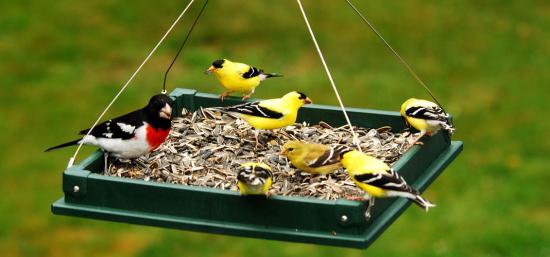
The bird feeder should be placed in an open place. Installed in dense branches, it will be too accessible for cats. The wall of a building or a tree trunk is the most suitable place. The hanging height of 1.5 meters is equally good both for the safety of birds and for adding food to humans.
Do not hang feeders in drafts. When visiting them, the birds will feel too uncomfortable. Structures dangling from the wind do not give birds the opportunity to eat in peace.
Decorating the product, using it to decorate the site
In addition to its main functions, a bird feeder can also serve as a decorative accessory for a garden plot. By showing creative imagination, you can give these products an unusually original look.
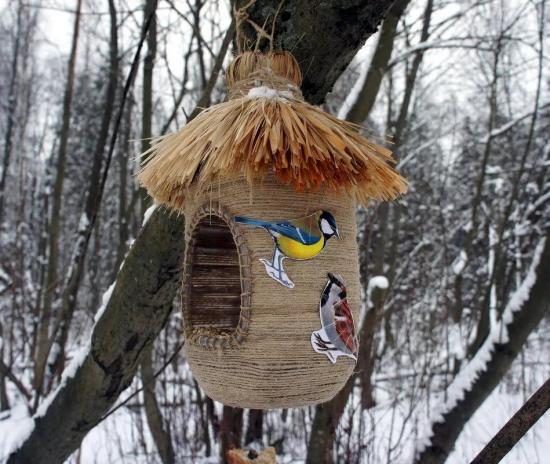
Paper and cardboard products can be decorated with drawings. For this purpose, oil paints should be used. Plastic bottles and eggplants can also be beautifully painted.
Using paints, the container can be imagined as a house with windows and a door. The feeder can be stylized as a wooden frame. Crafts with images of birds and flowers will look beautiful in the garden.
To decorate products, ropes, twine, and burlap are used. Compositions of pine cones, spruce trees, chestnuts, straw, and artistically selected scraps of fabric are placed on top of the craft. Particularly talented craftsmen can decorate their products with forged elements and carvings.
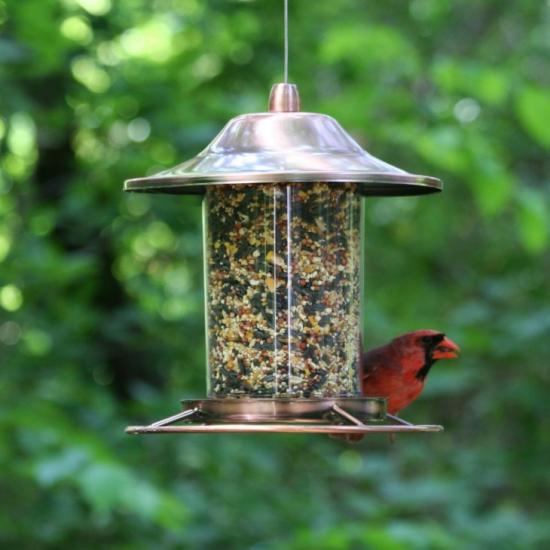
If ceramic dishes act as a feeder, this option can be beautifully played up by using items from one set to create an integral composition.
You can decorate the area using disposable feeders in the form of cardboard figures. These can be stars, Christmas trees, hearts, bears and other molds.
Gelatin or a nutritious adhesive mass based on oatmeal mixed with raw egg and honey is applied to a cardboard base. The figurine greased with “glue” must be rolled in a food mixture of grain, seeds, nuts and bread crumbs.
Next, a hole is made in the figurine for the fastening thread, threaded through it and the products are sent to the refrigerator for 3-4 hours. After hardening, the cheerful and nutritious figures are hung on trees. If it happens on New Year’s Eve, such figurines can act as Christmas tree decorations.
How to quickly make a beautiful feeder:
What can you feed birds in winter?
During the cold season, birds suffer from a huge shortage of food. Therefore, many of them are not picky, but peck at everything that a person offers them. The most suitable food for birds would be any ground cereals: buckwheat, rice, millet. Crushed and whole sunflower and pumpkin seeds are also suitable.
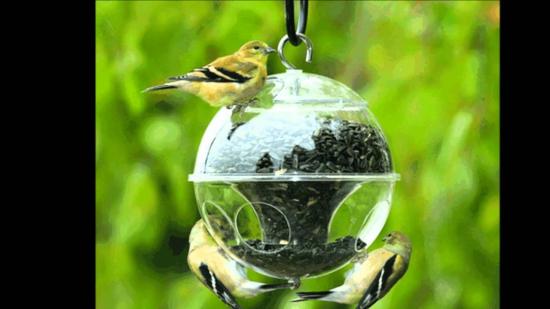
Birds are not averse to snacking on finely chopped walnuts, especially if this substance is sweetened with a small amount of honey.
It is recommended to feed tits with lard and chicken meat. These predators will also enjoy crumbled boiled eggs.
In winter, various dried berries will be good food for all birds. These can be either semi-wild rowan, bird cherry, elderberry, or dried apples, dried apricots, dried cherries and plums.
Birds should not be offered salty or fried food. Do not fill feeders with rye bread and fresh pastries. You should also not offer fruits from the citrus family. Such food contributes to gastrointestinal diseases in birds.
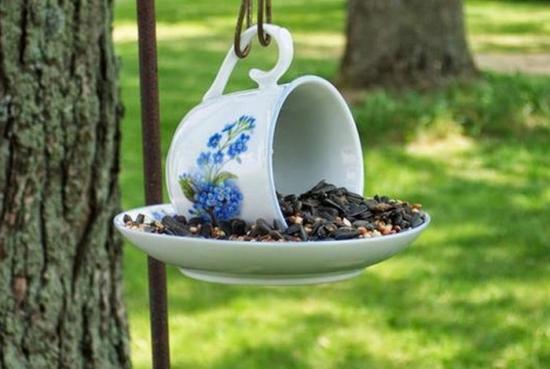
The following industrial products are considered absolutely inappropriate for feeding birds:
- chips;
- sausages;
- cakes;
- cereals;
- bananas;
- fresh fruits.
If the owner of the property is interested in having a certain species of birds live under his window, he should try to fill the feeder with the most suitable food for it. You can determine the preferences of a particular bird not only from scientific literature, but also on the basis of your own observations.
When taking care of feeding birds, it is important to remember that they get used to receiving food in the same place. They can fly long distances for a hearty meal. If, upon arrival, they find an empty feeder, they may not have the strength to further search for food.

To avoid the death of feathered guests, the feeder must be filled in a timely manner.
If you cannot constantly monitor the availability of food, you should not take on a responsibility, failure to fulfill which may subsequently cause the death of living beings who have trusted a person.
A homemade bird feeder is a fairly simple craft. Even a child of primary school age can take on making a simple design.
You can use an unnecessary paper or plastic container as a base for the craft. It is important to fill the dining room in a timely manner with tasty food that will not harm the birds and will allow them to safely survive the cold season.
Some ideas for making feeders:

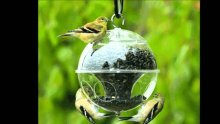
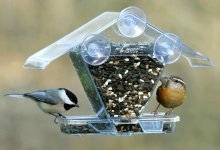
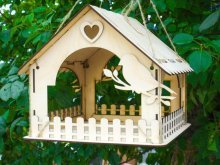
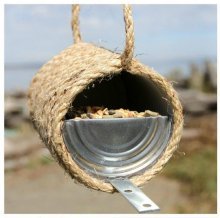
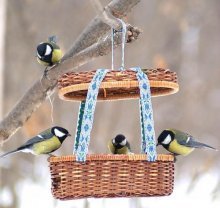
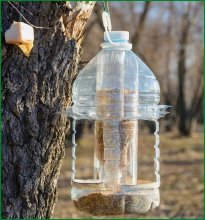
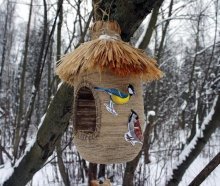
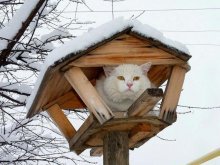
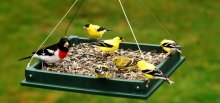
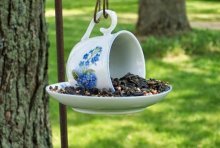
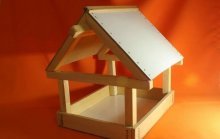
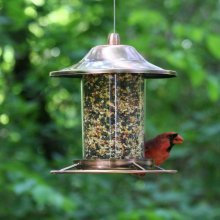
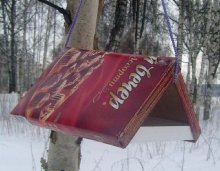
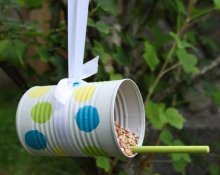
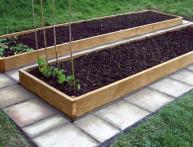
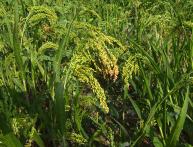
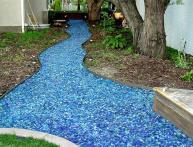

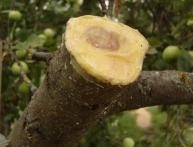
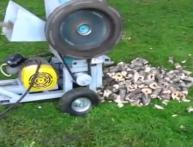

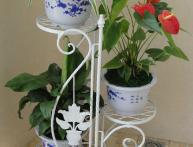
Comments
From a large plastic bottle, I made a feeder for small birds. On both sides, almost at the bottom of the bottle, I cut small holes so that large birds, such as a pigeon, could not climb inside. The feeder is designed for sparrows and titmice. I covered the edges of the holes in the jar with medical plaster so that the birds would not damage their wings.
Yes, plastic bottles are being used with all their might. In our city, children hung all the trees with them. Well done, that's commendable. After a snowfall in winter, birds cannot find food on the roads; their only hope is at feeders. And the kids add seeds and cereals there.
Yes, a bottle feeder is of course a simple and quick option, which will not require any special difficulty or effort to implement. I myself have a similar pebble for birds in my dacha.